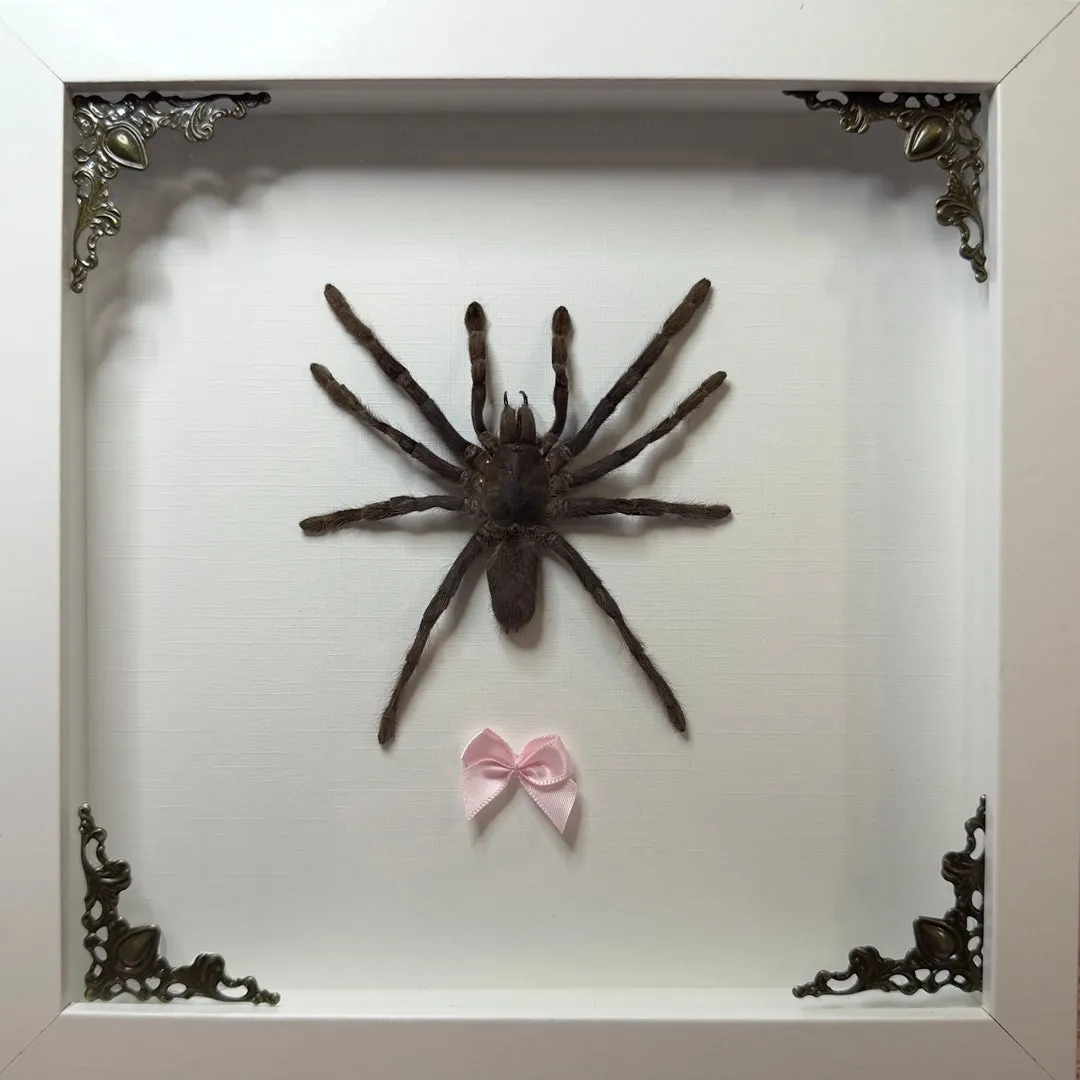The Yellow Knee Tarantula (Grammostola pulchripes) is a popular and striking species of tarantula, cherished by both novice and experienced arachnid enthusiasts. Their docile nature, combined with their beautiful appearance, makes them a fascinating pet. This comprehensive guide provides everything you need to know about owning and caring for a Yellow Knee Tarantula. From their origins and habitat to their specific care requirements, this guide will equip you with the knowledge to ensure your tarantula thrives.
What is a Yellow Knee Tarantula
The Yellow Knee Tarantula, scientifically known as Grammostola pulchripes, is a terrestrial tarantula species native to South America. They are known for their striking appearance, characterized by a black body and vibrant yellow markings on their legs. These spiders are relatively large and are known for their docile temperament, making them a popular choice for tarantula keepers of all experience levels. They are relatively easy to care for compared to some other tarantula species, making them a great option for beginners. Their longevity is also a significant draw, as they can live for many years with proper care.
Appearance and Characteristics
Identifying Features
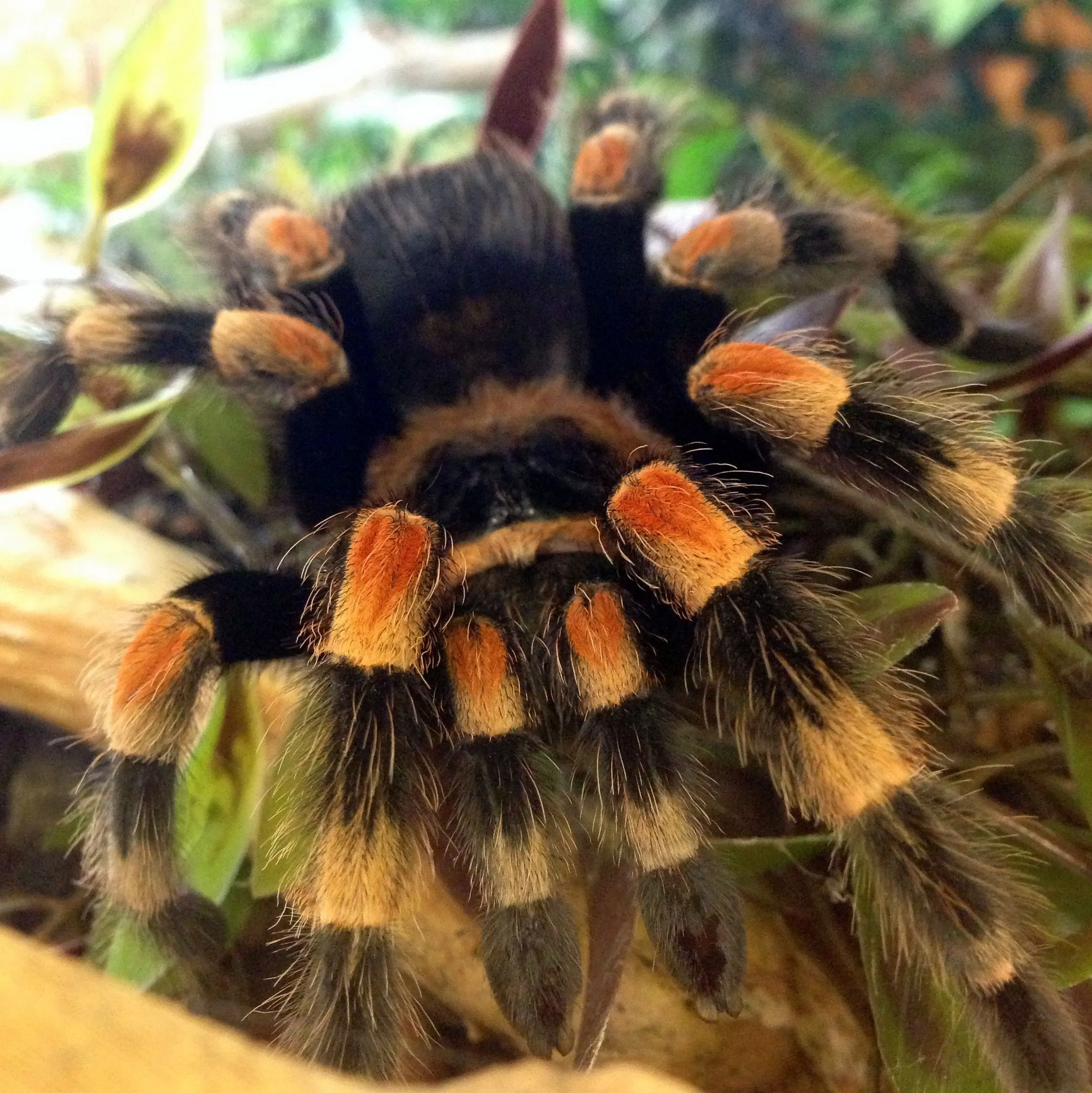
The most distinctive feature of the Yellow Knee Tarantula is the bright yellow coloration on the joints of their legs, which provides a striking contrast against their dark body, usually black or dark brown. The carapace, or the top of their body, is typically a dark shade, and their abdomen is covered in fine hairs. The combination of these features makes them visually appealing and easily recognizable. The specific shade of yellow can vary slightly between individuals, but the contrast is always present.
Size and Lifespan
Yellow Knee Tarantulas are known for their impressive size. Females can grow to have a leg span of up to 7-8 inches, while males are generally slightly smaller. Their lifespan is quite remarkable; females can live for up to 20 years or more, providing a long-term companionship. Males, however, have a shorter lifespan, typically living for around 5-7 years. This difference in lifespan is an important consideration for anyone planning to own a Yellow Knee Tarantula, influencing long-term care considerations.
Origin and Habitat
Native Range
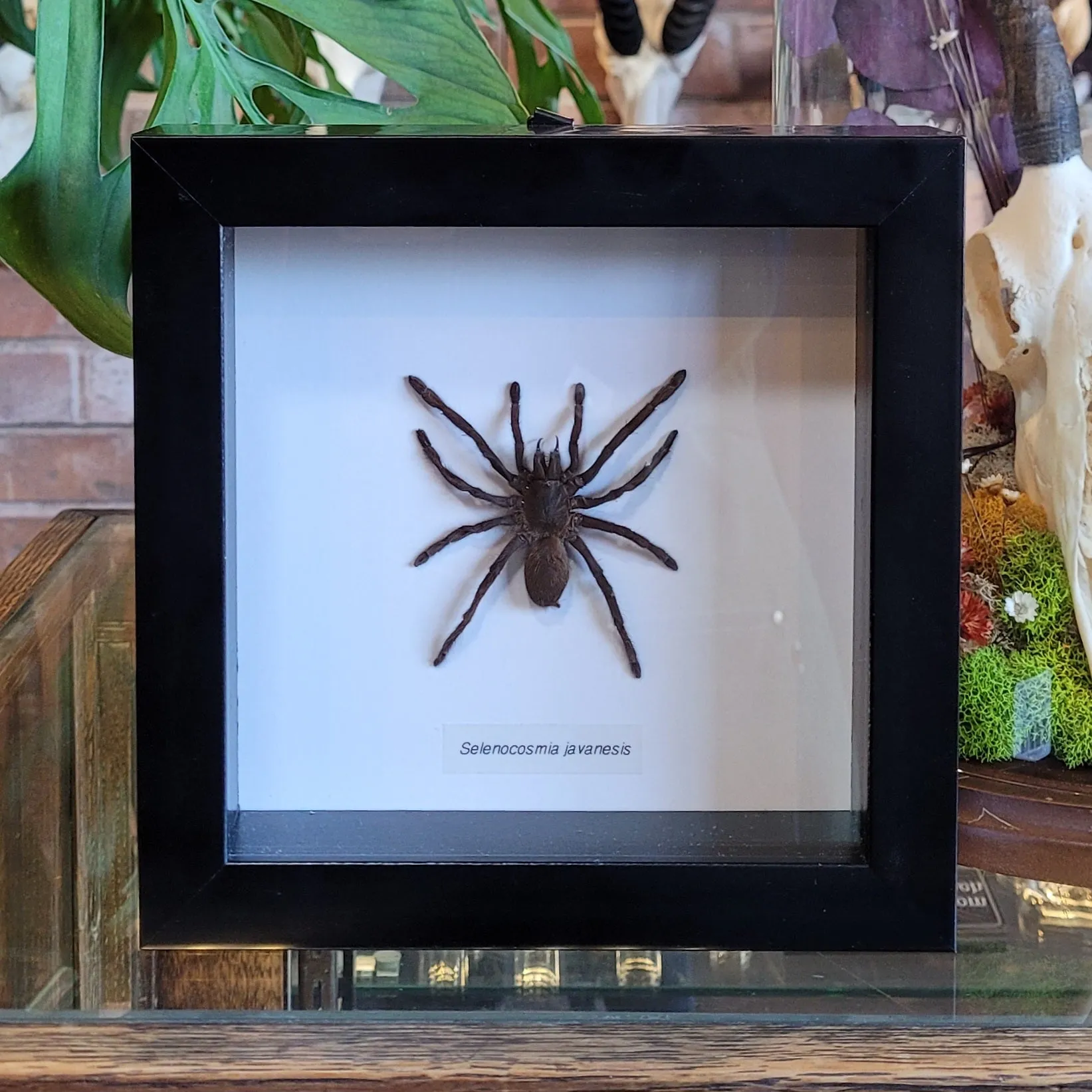
Yellow Knee Tarantulas are native to the grasslands and scrublands of South America. They are primarily found in regions of Argentina, Paraguay, and Uruguay. Understanding their natural habitat is essential for providing the right environment in captivity. These spiders have adapted to a specific climate and environment, and replicating this as closely as possible is key to their health and well-being.
Preferred Environment
In their natural habitat, Yellow Knee Tarantulas are terrestrial, meaning they live on the ground. They often burrow or find shelter under rocks, logs, or in self-made burrows. They prefer a humid environment with moderate temperatures. The substrate in their natural environment is typically a mix of soil, leaf litter, and other organic matter. This environment provides them with both shelter and a place to hunt and ambush prey.
Caring for Your Yellow Knee Tarantula
Proper care is crucial for the health and longevity of your Yellow Knee Tarantula. This includes creating a suitable habitat, providing appropriate food and water, and maintaining the right temperature and humidity levels. By following these guidelines, you can ensure your tarantula lives a long, healthy, and happy life. This includes the use of proper equipment, regular maintenance, and a watchful eye for any signs of distress or illness.
Creating the Ideal Habitat
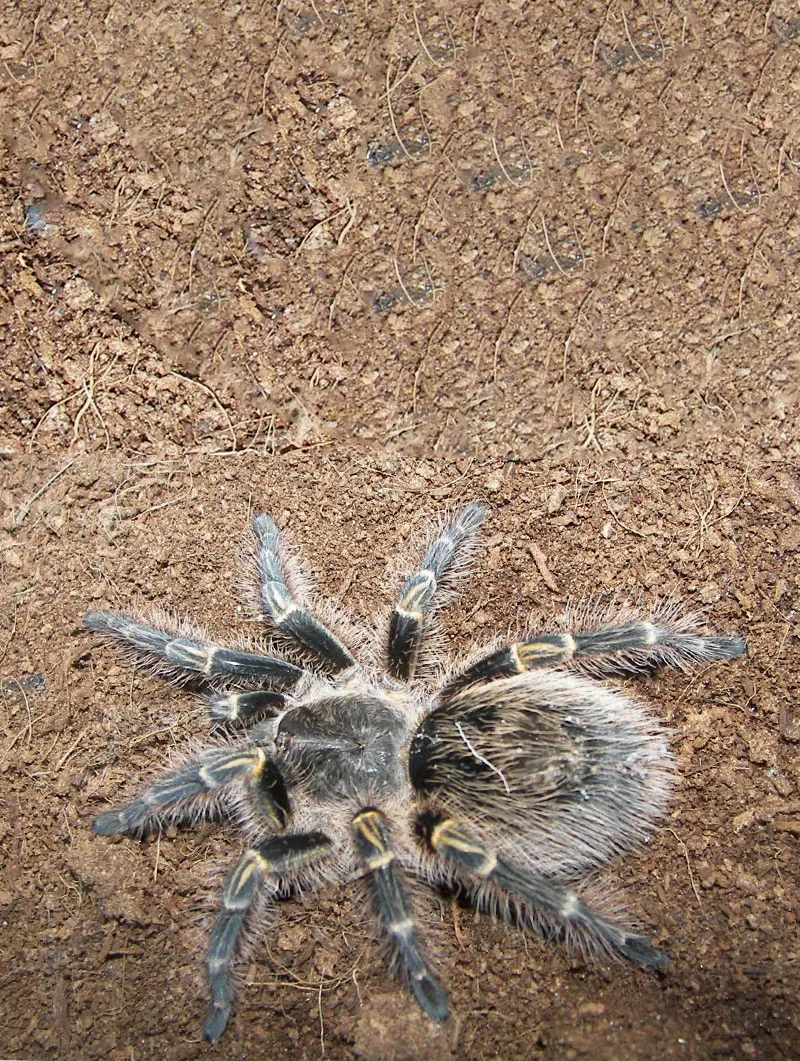
Enclosure Size and Setup
A suitable enclosure is vital for your Yellow Knee Tarantula. A glass terrarium or a plastic container with good ventilation is recommended. For adults, a tank that is approximately 12x12x12 inches or larger is suitable, but more space is always better. The enclosure should have a secure lid to prevent escapes. Proper ventilation is essential to prevent the buildup of humidity and mold. The enclosure should also be decorated to mimic their natural environment, providing hiding places and climbing opportunities.
Substrate and Decor
The substrate should be deep enough to allow your tarantula to burrow if it chooses to. A mixture of coco fiber, peat moss, and a small amount of vermiculite is ideal. This substrate helps to maintain the correct humidity levels and provides a comfortable environment. Decorate the enclosure with cork bark, artificial plants, and a water dish. These additions provide hiding places, enrich the environment, and contribute to the tarantula’s well-being. Be sure all items are secure.
Temperature and Humidity
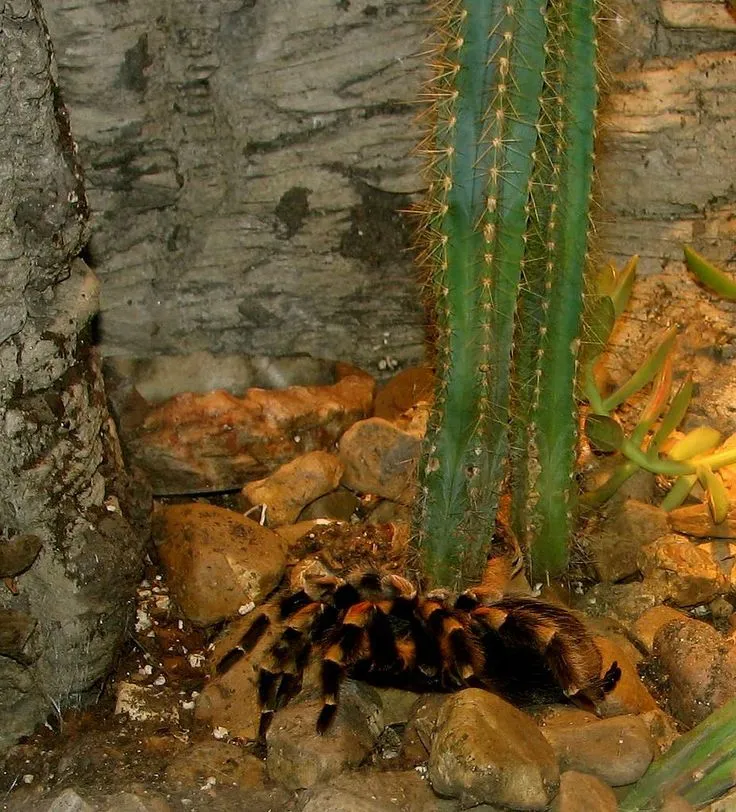
Maintain a temperature between 75-85°F (24-29°C) within the enclosure. A heating pad placed on the side of the tank can help maintain the correct temperature. Monitor the temperature with a thermometer to ensure it stays within the appropriate range. Humidity should be kept between 60-70%. This can be achieved by misting the enclosure lightly with water a few times a week, especially during molting. Use a hygrometer to monitor the humidity levels accurately. Proper temperature and humidity are essential for your tarantula’s health and successful molting.
Feeding Your Tarantula
Feeding your Yellow Knee Tarantula appropriately is essential for its growth and health. They are opportunistic predators and will eat a variety of insects. The size and frequency of feeding will depend on the size and age of your tarantula. Regular feeding and providing the appropriate diet are crucial for the well-being of your pet. Remember to remove uneaten food to prevent mold and maintain a clean environment.
What to Feed
A varied diet is best for your Yellow Knee Tarantula. Suitable food items include crickets, mealworms, roaches, and occasionally, small pre-killed vertebrates such as pinkie mice (for adult tarantulas only). Ensure that the insects are gut-loaded before feeding them to your tarantula. Gut-loading involves feeding the insects nutritious foods to improve their nutritional value. Avoid feeding your tarantula insects that have been exposed to pesticides. Clean, healthy prey is essential for your tarantula’s health.
Feeding Frequency
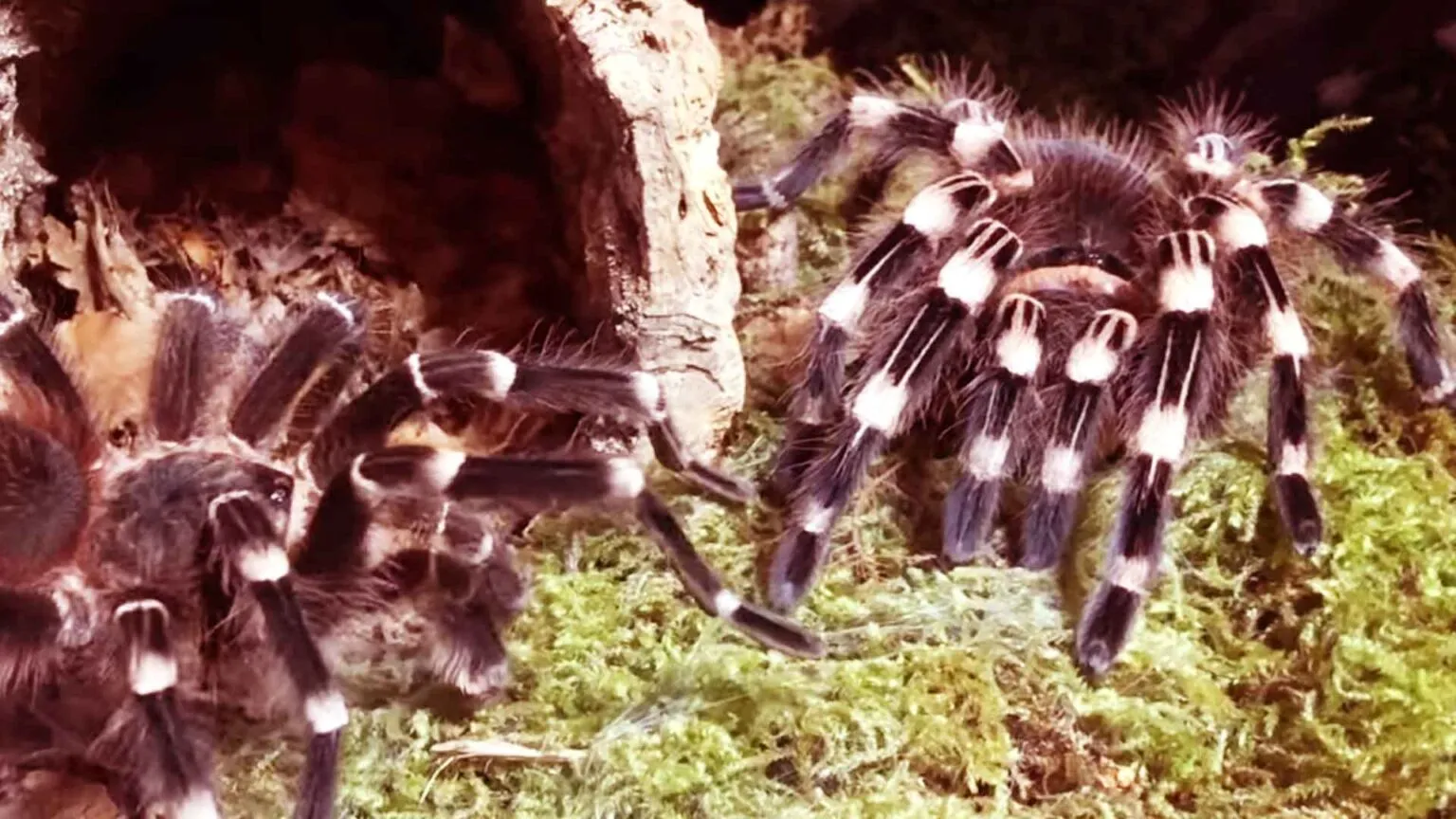
Juvenile tarantulas should be fed 2-3 times a week. Adult tarantulas can be fed once or twice a week, or even less frequently, depending on their appetite and size. Observe your tarantula’s abdomen; if it appears plump, reduce the feeding frequency. Always remove any uneaten food within 24 hours to prevent mold and maintain a clean enclosure. Ensure a fresh water source is always available for your tarantula.
Handling and Safety
While Yellow Knee Tarantulas are generally docile, it’s important to handle them with care and caution. Understanding the potential risks and taking the necessary precautions will ensure your safety and the tarantula’s well-being. While they rarely bite, it is important to avoid unnecessary handling.
Handling Risks and Precautions
Yellow Knee Tarantulas, like all tarantulas, possess urticating hairs on their abdomen. These hairs can be flicked at predators or, in this case, handlers. When disturbed, tarantulas may flick these hairs, which can cause skin irritation and itching. Avoid handling your tarantula if possible, as this may distress the animal. If handling is necessary, do so with extreme care. Wash your hands thoroughly before and after handling your tarantula. Avoid touching your face or eyes after handling your tarantula.
Recognizing Stress Signals
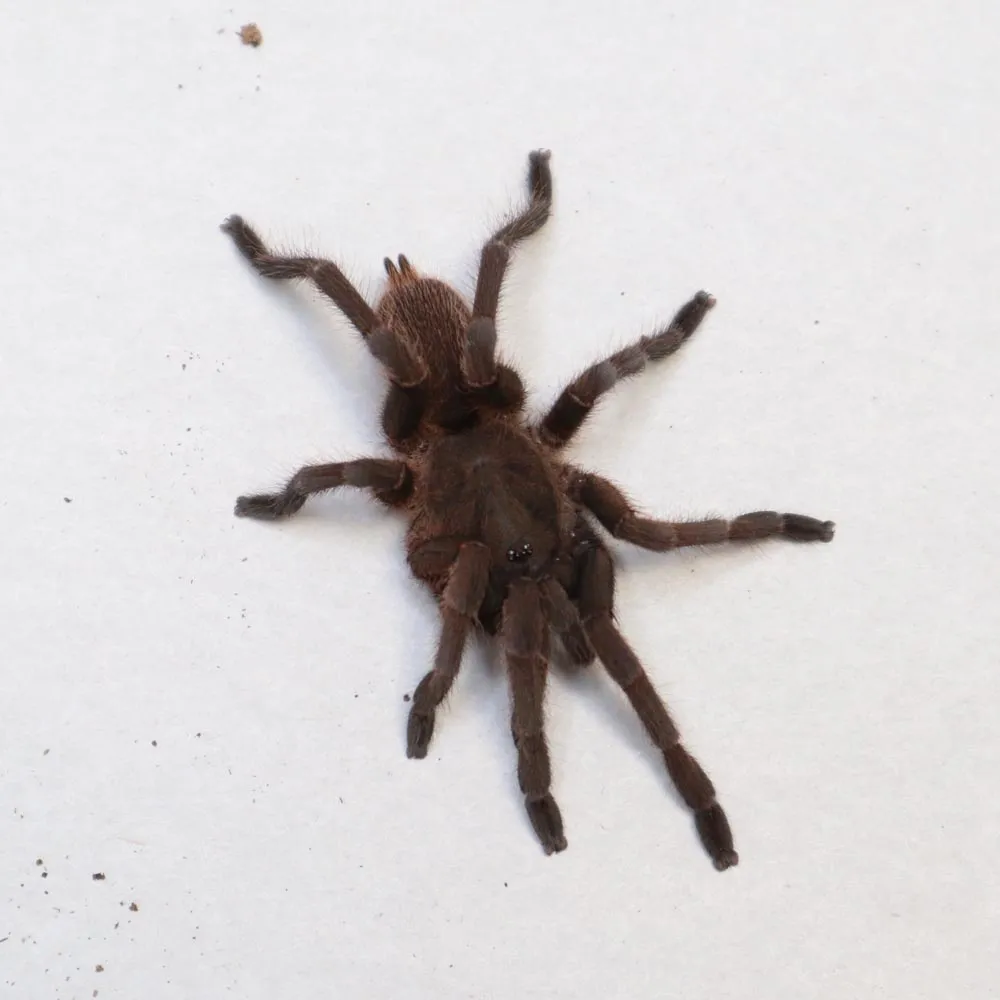
Pay attention to your tarantula’s behavior to recognize signs of stress. These include: defensive postures (rearing up), flicking urticating hairs, or running away. If your tarantula displays these behaviors, it is best to leave it alone. Ensure the enclosure is set up correctly to minimize stress, including appropriate temperature, humidity, and hiding places. A stressed tarantula is more likely to bite or flick hairs. Observe your pet regularly and learn to recognize its natural behavior to identify any changes that might indicate stress.
Common Health Issues
Like any pet, Yellow Knee Tarantulas can be susceptible to certain health issues. Understanding these issues and taking preventative measures can help ensure your tarantula lives a long and healthy life. Regular observation of your tarantula and a proactive approach to its care can prevent or mitigate potential health problems.
Parasites and Diseases
Yellow Knee Tarantulas are generally hardy, but they can be susceptible to parasites such as mites. Mites are small, red or brown organisms that can infest the tarantula and its enclosure. To prevent mites, ensure that the enclosure is kept clean and the substrate is replaced regularly. Diseases are less common but can occur if the tarantula’s environment is not properly maintained. Maintain optimal humidity and temperature levels and provide fresh water to minimize the risk of disease. If you suspect your tarantula is ill, consult with a veterinarian experienced in exotic animals.
Preventative Care
Preventative care is crucial for maintaining your tarantula’s health. This includes providing a clean and appropriate environment, a balanced diet, and regular observation. Replace the substrate regularly to prevent the buildup of waste and mold. Ensure that the enclosure is always clean and free of uneaten food. Monitor your tarantula for any signs of illness or distress, such as lethargy, loss of appetite, or unusual behavior. Early detection and treatment of any health problems are vital for your tarantula’s well-being.
Breeding Yellow Knee Tarantulas
Breeding Yellow Knee Tarantulas can be a rewarding experience. It requires patience, knowledge, and the proper setup. Understanding the mating process and the care of the egg sac is essential. Successful breeding requires a healthy pair of tarantulas and a well-prepared environment. It’s important to be prepared for the responsibilities of caring for spiderlings.
Mating Process
Breeding Yellow Knee Tarantulas involves introducing a mature male tarantula to a mature female. The male must be larger than the female, and it is often recommended to feed them well before introducing them. The male will often drum his pedipalps to the ground as a mating display, and he will approach the female cautiously. If the female is receptive, she will allow the male to mate with her. Mating can be a dangerous process for the male, as the female may try to eat him. It’s important to monitor the mating process closely and separate the pair after mating is complete to prevent the female from cannibalizing the male.
Egg Sac Management
After mating, the female will lay an egg sac, which she will typically carry and protect. The egg sac contains numerous eggs, which will hatch into spiderlings. The female will fiercely protect the egg sac. Handle the egg sac with great care and keep the environment stable. Monitor the egg sac for any signs of problems. Once the spiderlings hatch, they will need to be cared for separately. Proper management of the egg sac and careful care of the spiderlings are vital to successfully breeding Yellow Knee Tarantulas.
Conclusion
Owning a Yellow Knee Tarantula can be a fulfilling experience, provided you are prepared to meet its needs. By following the guidelines outlined in this comprehensive guide, you can ensure your tarantula thrives and brings you years of enjoyment. Always prioritize the well-being of your pet, provide a suitable environment, and observe its behavior. With the right care and understanding, your Yellow Knee Tarantula can become a fascinating and rewarding companion. Always remember to research and educate yourself on the specific needs of your pet to ensure a long and healthy life.
